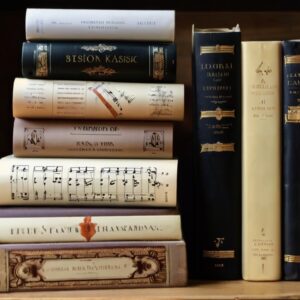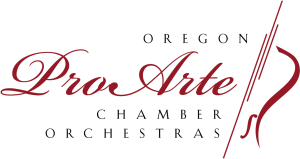Tchaikovsky and Shakespeare
Tchaikovsky’s admiration for Shakespearean dramas significantly influenced his compositional output, leading to the creation of several remarkable works. Among these, the “Romeo and Juliet” fantasy overture stands out as a noteworthy example. This piece is a musical interpretation of Shakespeare’s iconic tragedy but an audacious exploration of love, fate, and conflict as experienced by the ill-fated lovers, Romeo and Juliet. Tchaikovsky masterfully employs various musical motifs to encapsulate the essence of the characters and the moments within the narrative. The tenderness and passion of Romeo and Juliet’s love are immortalized in a delicate and lyrical love theme, which has transcended the piece itself to become emblematic of romantic love worldwide. The music vividly portrays the brooding tension and eventual calamity that ensnares the young lovers, utilizing the orchestra’s full range to express the emotional depth and complexity inherent in Shakespeare’s work. Through this overture, Tchaikovsky pays homage to Shakespeare demonstrates his exceptional ability to translate dramatic literature into a compelling musical language, creating a timeless tribute to the enduring power of love and tragedy.
Debussy and Symbolist Poetry

Claude Debussy, the French composer, is celebrated for his intricate relationship with literature, especially the symbolist poetry that flourished toward the end of the 19th century. Among his numerous works, “Prelude to the Afternoon of a Faun” stands as a testament to his proficiency in translating the nuanced language of poetry into the realm of music. This composition is inspired by Stéphane Mallarmé’s poem of the same name and serves as a musical counterpart that complements and expands upon the poem’s ethereal and enigmatic themes. Debussy’s approach to the piece showcases his rejection of traditional harmonic progressions and forms, opting instead for a more fluid and evolving musical structure that mirrors the free-associative nature of symbolist poetry.
The “Prelude” is notable for its harmonic innovations and also for its ability to evoke a vivid, impressionistic soundscape that aligns closely with Mallarmé’s intricate imagery and thematic obscurity. Debussy ingeniously employs a palette of musical colors and dynamics to reflect the poem’s shifts from the sensual stirrings of the faun’s dreams to the ethereal presence of the nymphs. His use of modal scales, whole-tone scales, and unresolved dissonances contributes to the creation of a musical language that, much like symbolist poetry, thrives on suggestion and evocation rather than explicit depiction. This quality makes the “Prelude” an immersive experience, inviting listeners into a world where music and poetry intertwine, blurring the lines between reality and fantasy.
Debussy’s contribution to music through works like “Prelude to the Afternoon of a Faun” cannot be overstated. He pioneered a new way of compositional thinking that resonated with the abstract and metaphorical aspirations of symbolist poets. By doing so, Debussy enriched the musical world with compositions that defy conventional categorization and bridged the gap between the auditory and the literary arts. His innovative techniques in harmony and structure have encouraged a deeper exploration of musical expression, demonstrating how closely music can reflect the subtleties of human emotions and intellectual ideas, akin to the finest examples of symbolist poetry. Through this symbiosis of music and poetry, Debussy opened new pathways for artistic expression, setting the stage for the further evolution of music in the 20th century.
Romanticism
The Romantic era, spanning roughly from the late 18th century to the early 20th century, marks a period of profound interconnection between literature and music, as both forms of art embraced and propelled the ideals of Romanticism. This cultural movement placed a high value on emotion, individualism, and an appreciation for the grandeur and mystery of the natural world, alongside a fascination with the supernatural and the heroic. The music of this era deeply resonates with these themes, mirroring the literary world’s exploration of the depths of human emotion and the boundless realms of nature and fantasy. Composers like Ludwig van Beethoven, Franz Schubert, and later Richard Wagner, were at the forefront of this artistic revolution, imbuing their music with a level of emotional intensity and complexity that was unparalleled at the time.
Beethoven, often heralded as the bridge between the Classical and Romantic eras, infused his compositions with a new depth of emotional expression, reflecting the Romantic emphasis on individual experience and personal expression. His music, from the passionately stormy to the sublimely lyrical, captures the full spectrum of human emotion, embodying the Romantic ideal of the artist as a conduit for deep, universal truths. Franz Schubert, with his exquisite lieder and instrumental works, delved into the themes of love, longing, and the beauty of nature, translating the poetic sensibilities of his time into music that speaks directly to the soul. Richard Wagner, meanwhile, pushed the boundaries of musical drama with his concept of the Gesamtkunstwerk, or “total work of art,” which sought to synthesize music, poetry, drama, and visual elements, thereby creating immersive operatic experiences. His works often explored mythological and legendary tales, reflecting the Romantic fascination with heroism, the supernatural, and the transcendent power of love.
The Romantic era’s music is characterized by its expansion of form, its innovative use of harmony and orchestration, and its exploration of new thematic material. Composers employed these elements to create works that could convey a narrative or evoke a vivid scene or emotion, much in the way literature does. The Romantic composers’ interest in folk music and the stories and legends of past ages further exemplifies the era’s entwining of music with the narrative and thematic concerns of literature. Through their groundbreaking contributions, these composers provided a musical legacy that continues to resonate, embodying the enduring appeal of Romanticism’s core principles: the exaltation of the imagination, the exploration of the self, and the ceaseless quest for the sublime.
Modernism and the Avant-Garde
As the 20th century progressed, the artistic world witnessed a seismic shift in both literature and music, marked by an audacious move toward modernism and the avant-garde. This period of experimentation and radical departure from tradition reflected a broader cultural response to the rapid changes and uncertainties of the era, including the disorientations of the World Wars and the accelerating pace of technological innovation. In literature, modernism sought to capture the complexity and disjointedness of the modern experience, using fragmented narrative structures, stream of consciousness, and a deliberate obfuscation of traditional plot and character development. Similarly, in music, composers like Igor Stravinsky and Arnold Schoenberg led the charge toward breaking the mold of conventional harmony and structure, pioneering compositions that were at once a reflection and a critique of the tumultuous world around them.
Stravinsky, with works such as “The Rite of Spring,” shocked and electrified audiences with his use of dissonant harmonies, irregular rhythms, and a primal energy that seemed to hark back to ancient rites and rituals, thus challenging the very foundations of musical expression. On the other hand, Arnold Schoenberg ventured into even more radical territory with the development of atonal music and his subsequent creation of the twelve-tone technique, a method that treated all twelve notes of the chromatic scale equally, thereby abolishing the traditional hierarchy of tonality. This innovation revolutionized the way composers thought about melody and harmony and mirrored the modernist literary challenge to linear narratives and conventional forms.
The era of modernism and the avant-garde was characterized by a deliberate blurring of boundaries, between different artistic disciplines and the traditional and the contemporary, the harmonious and the dissonant, the accessible and the obscure. Composers experimented with new musical forms and techniques, such as serialism, electronic music, and indeterminacy, pushing the limits of musical language and expression. These avant-garde techniques reflected the literary exploration of new perspectives and the deconstruction of established forms, aiming to capture the fractured reality of the modern age.
Through their bold innovations, these composers and their literary counterparts forged a new path for art, one that was not afraid to confront the complexities and contradictions of the 20th century. The modernist and avant-garde movements, both in literature and music, stand as testament to the enduring capacity of art to evolve, to question, and to redefine itself in the face of an ever-changing world.
